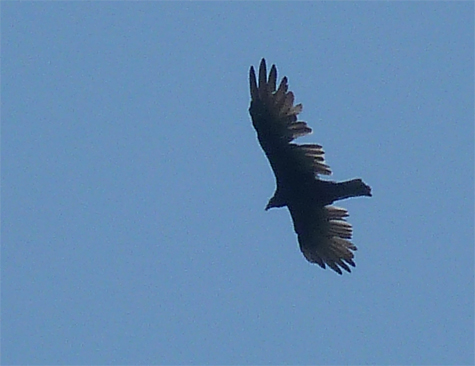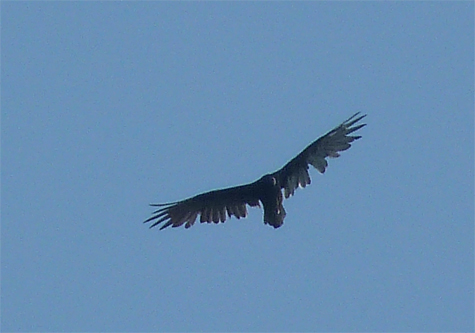
Each year, adult birds need to molt their flight feathers (the wing and tail feathers). The feathers wear out, become frayed, twisted, and in general less efficient. Some birds, like ducks and geese, lose all of their flight feathers at once, they can’t fly. Ducks and geese can afford to do this because they can spend their flightless days out on open water away from potential land-based predators.
Most birds, though, need to fly every day, at a moments notice, in a split second. Imagine a cardinal hoping over to your bird feeder looking for sunflower seeds. It would probably find plenty of seed on the ground beneath the feeder, but the risk of being snatched up by a fox, hawk, or even a feral cat is too great for the bird to be relegated to walking when it could (should) be flying.
Imagine a hummingbird trying to secure nectar, or a spider from a web, while flightless. Being unable to fly would take the hum out of the bird, in more ways than one. They rely on their wings for everything they do. Besides, their legs are so short that they can’t walk anyway.
Turkey vultures hunt for future meals by soaring overhead and sniffing out a roadkill deer or other unfortunate expired animal. This would be near impossible on foot, although fox, coyotes, and hyenas seem to do alright. Ah, but they’re fox, coyotes and hyenas, not turkey vultures. Vultures do a good job of cleaning up the landscape and they do it by being able to fly over a wide area in search of other less fortunate wildlife.

Molting of the flight feathers, the feathers on the wings and tails of birds, usually follows a specific order. On the tail, the inner most feathers drop out and new feathers grow in. The molt proceeds from the center out, the outer most feathers are the last to molt.
The wings are made up of primaries and secondaries. There are also tertials, lesser, median, and greater coverts, but we don’t need to include those here. We’re talking about the big feathers that stick out towards the back of the wing and look like fingers at the tip of the wing.
The secondaries are the feathers which occupy the space from the body to about half way out on the wing. The primaries are from the halfway point (roughly) to the tip of the wing. The molt starts where the secondaries and primaries meet, the primary molt making its way out to the tip of the wing and the secondary molt making its way towards the body of the bird, ideally, one or two feathers at a time. I can see new growth on the vulture in the photos, but it looks as though feathers are missing from multiple places on the wing.
The tail seems fine. The bird seems to be near the end of its tail molt, the outer feathers are growing in as they should.
Occasionally, a bird will show up where the molt seems to have begun in several places at once. When you spot something like the vulture above, it makes you wonder how they stay aloft. As I said, I’ve seen worse, but turkey vultures rely heavily on uplift from thermals and wind, not flapping flight. When you flap, flap, flap to stay aloft you can compensate for the missing feathers by flapping a little harder, not so, if you rely on the wind beneath your wings to keep you airborne.
Surely a bird like the one in the photos and, of course, a bird that is missing even more of their flight feathers, can feel the diminished lift cause by those missing feathers. How do they compensate for that diminished lift? Is this a particularly stressful time for the birds? Or, do they simply go about their daily routines, taking it all in stride?
Again, I’ve seen birds in worse shape than the turkey vulture in the photos. I’m sure this bird has by now grown in its feathers and has moved on, but it sure makes me stop and wonder.
Molting can be a stressful time for a bird. It uses extra energy and some birds have been known to change their typical behaviors during such time. A lot of birds can become “cranky” during this time. When my chickens start to molt, their egg production has stopped. Perhaps they are stopping production because the body is using many resources to produce new feathers.
In other animals such as snakes, shedding can throw their routines off as well.
{the more you know…}